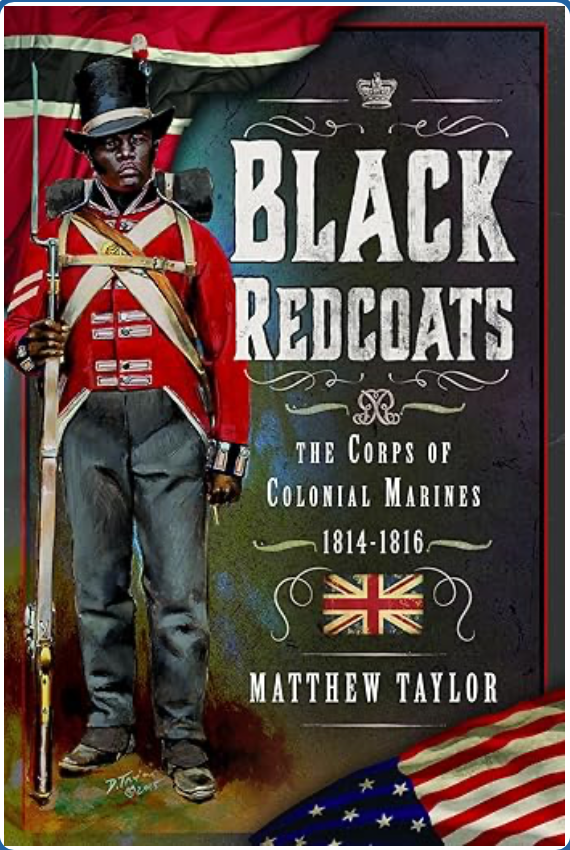Second Corps of Colonial Marines
- Si Biggs

- May 18, 2020
- 4 min read
Updated: Jul 31
Unit/ Formation: Colonial Marines
Location: North America
Period/ Conflict: War of 1812
Year: 1814
Date/s: 18 May 1814
The Second Corps of Colonial Marines served from 18 May 1814 until 20 August 1816.
HQ 's Tangier Island/ Cumberland Island/ Negro Fort, Royal Naval Dockyard, Bermuda
Major Engagements: Battle of Bladensburg - Burning of Washington - Battle of North Point - Battle of Fort Peter
Vice-Admiral Sir Alexander Cochrane, on taking up his command as Commander-in-Chief of British forces on the North Atlantic Station, ordered the recruitment of a body of Colonial Marines.
Rear Admiral George Cockburn, Cochrane's second in command on the Atlantic coast, implemented this order, recruiting the second Corps of Colonial Marines. They served as part of the British forces on the Atlantic and Gulf coasts of the United States during that war.

On 2 April 1814, Cochrane issued a proclamation to all persons wishing to emigrate. Any persons would be received by the British, either at a military outpost or aboard British ships. Those seeking sanctuary could either enter His Majesty's Forces, or go "as free settlers to the British possessions in North America or the West Indies". (There was a historical precedent with Lord Dunmore's Proclamation of 7 November, 1775.)
By 10 May, Tangier Island off the coast of Virginia had been occupied to offer an accessible location for those seeking refuge. Males among the refugees were given the option 'to become blue Jackets, take up arms or join the working party' that was constructing Fort Albion, and its associated infrastructure.
The Corps was embodied on 18 May 1814 and made its combat debut in the raid on Pungoteague Creek on 30 May 1814, a skirmish alternatively known as the Battle of Rumley's Gut. The Corps then participated in actions in the Chesapeake campaign. Their debut was commented by James Ross, captain of HMS Albion, as 'a most excellent specimen of what they are likely to be. Their conduct was marked by great spirit and vivacity, and perfect obedience.' 'Though one of them ] was shot and died instantly in front of the others at Pangoteake, it did not daunt or check the others, but on the contrary animated them to seek revenge.'
Cockburn's initial impressions were positive, stating the new recruits were 'getting on astonishingly' and were 'really fine fellows'. In subsequent correspondence Cockburn mentions that recruits had behaved 'unexpectedly well' in several engagements, and had not committed any 'improper outrages.' The three companies of the Corps were to serve alongside their ship-borne Royal Marine counterparts from the Chesapeake squadron, commanded by Cockburn (originally comprising HMS Albion, HMS Dragon, HMS Loire, HMS Jasseur, and the schooner HMS St Lawrence) in a series of raids.

After the British failed to destroy the American Chesapeake Bay Flotilla at the Battle of St. Jerome Creek, the British conducted a number of coastal raids on the towns of Calverton, Huntingtown, Prince Frederick, Benedict and Lower Marlborough.
For instance, 30 Colonial and 180 Royal Marines, in 12 boats, raided Benedict on 15 June. A force of 50 Colonial Marines and 180 Royal Marines attacked the battery at Chesconessex Creek on 24 June 1814, two days before the Chesapeake Bay Flotilla escaped from St. Leonard's Creek.
The arrival on 19 July of a battalion of Royal Marines, which had left Bermuda on 30 June, enabled the squadron to mount further expeditions ashore. After a series of diversionary raids, the Marines were landed once more at Benedict on 19 August, this time accompanied by recently arrived Peninsular War army veterans. The battalion was to accompany the Colonial Marines in the attacks on Bladensburg and Washington in August 1814. A company fought at the Battle of Bladensburg, and the other two companies are therefore understood to have taken part in the burning of Washington.
Second Lieutenant Lewis Agassiz (1793-1866) was leading one of the firing parties into Washington D.C. as part of the burning of Washington during the War of 1812. The Agassiz family was granted a Coat of Arms, depicting a torch, for his part in this action. The Navy casualty return for the attack on Washington mentions it lost one man killed and six wounded, of whom the fatality and three of the wounded were from the Corps of Colonial Marines.
On 3 September 1814 three companies of the Corps were to join with the three remaining companies of the 3rd Battalion Royal Marines to make a new 3rd Battalion Royal and Colonial Marines. All three companies fought at the Battle of North Point. A fourth company was created in December 1814. The Corps conducted further recruitment on the coast of Georgia in the first quarter of 1815, when two further companies were formed, with sergeants taken from those companies recruited in the Chesapeake. The Corps served in many actions in the Chesapeake during 1814, with combat losses at Pungoteague and Baltimore.
Greater losses to the Corps occurred from an outbreak of dysentery in the winter of 1814, which killed the surgeon and 69 men of the battalion. When a dozen British sailors were captured near Tangier Island on 20 June 1814, their account of hardships encountered with food and water on the island, and the building of Fort Albion, were reported in a local newspaper.
The Corps's last combat during the War of 1812 took place in January 1815, when members of the Corps formed part of the British land forces in the attack on the fort at Point Peter.
Members of the Corps were involved in the occupation of Cumberland Island off of the coast of Georgia, where they assisted the emigration of several hundred slaves up to the time of the promulgation of the Peace Treaty.
Related Royal Marines 'Dits'
Read More/ References:





Comments